Affiliate disclosure: This post may contain affiliate links. Please see our Privacy Policy.
Shagbark hickory trees are an incredible find, and these long-lived trees produce some of the sweetest wild nuts you can taste anywhere. More than just for nuts, the bark is also edible and used to infuse a vanilla/butterscotch flavor into meals.
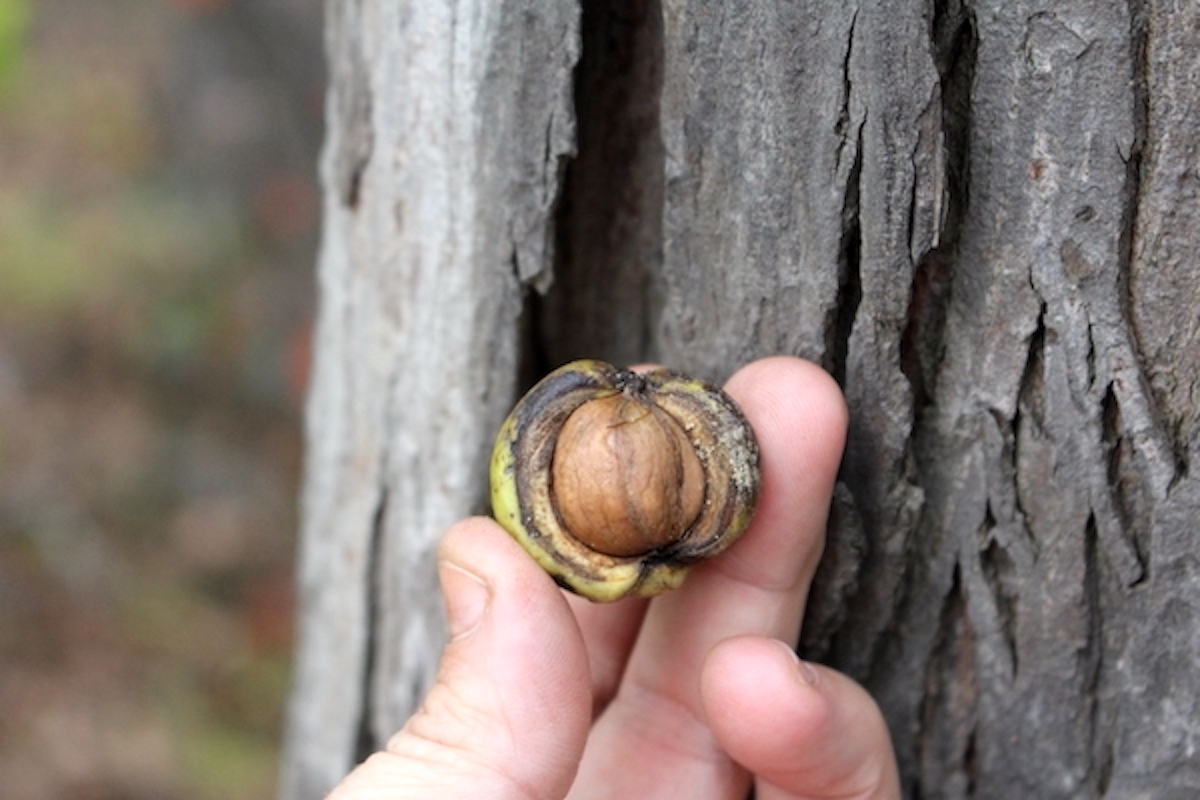
Shagbark hickory trees are a real treasure to find, and they were once popular park trees in the Northeast. Their distinctive bark will give them away, young or old, and it comes off in sheets that have been used to flavor meals (meat and sweets alike) for millennia.
We’d been trying to find a shagbark for years, and then, out of nowhere, we literally tripped over one (or, more accurately, tripped over its shed bark).
Planted more than 250 years ago, this particular tree was a part of a resort for the rich, and later, the land was donated to the town as a public park. The park is full of shagbark hickory trees, all planted by squirrels from this beauty.
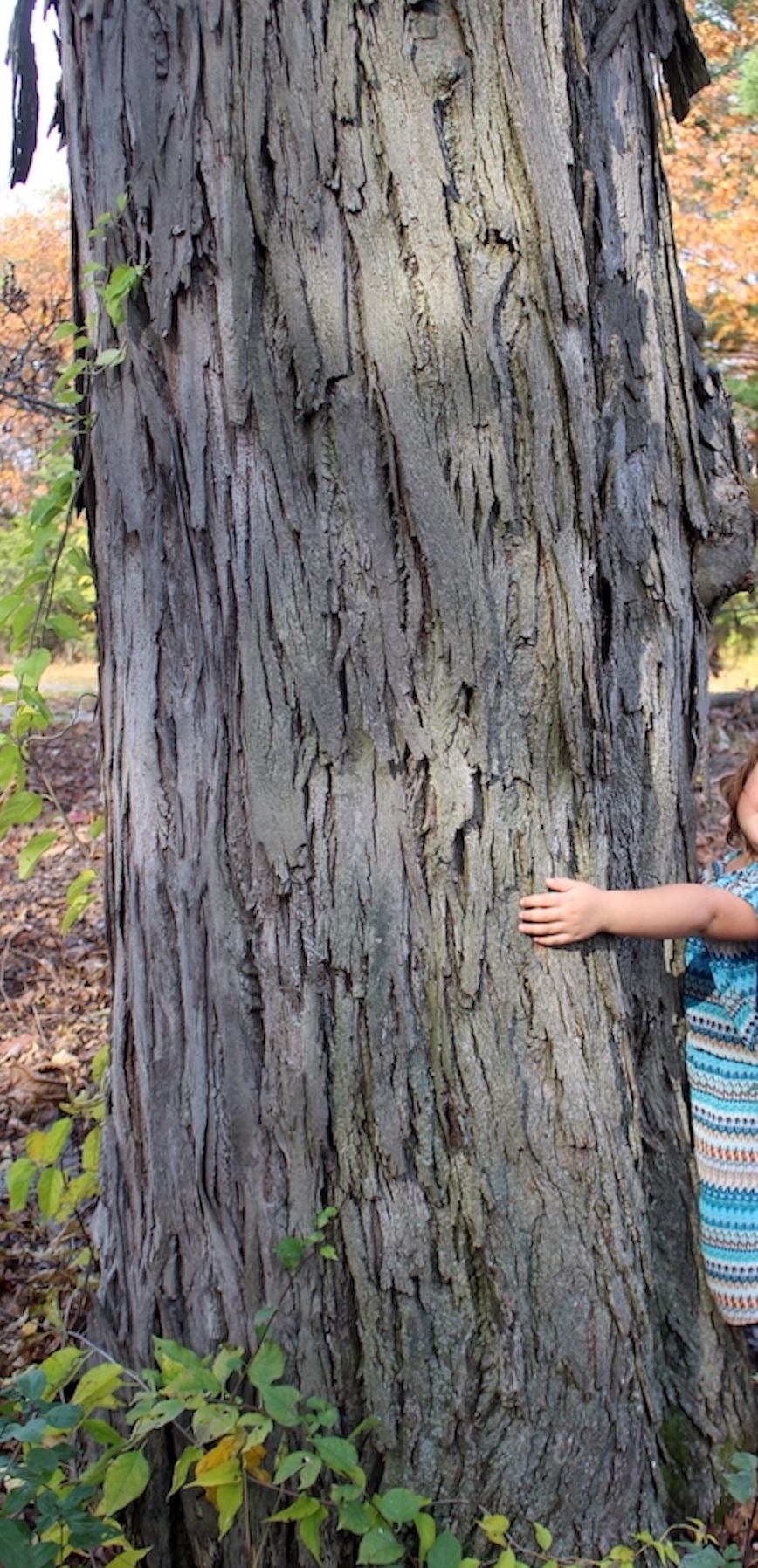
What is Shagbark Hickory?
The Shagbark Hickory (Cary ovata) is a large deciduous tree native to the eastern United States and Canada. Also known as the Scalybark Hickory, the Shellbark Hickory, or the Upland Hickory, it’s a long-lived perennial that may reach 350 years old or more.
Is Shagbark Hickory Edible?
Shagbark Hickory produces edible nuts that have a long history of culinary use. These nuts are tasty and safe to eat, raw or cooked.
It was also once a popular choice for herbal remedies, and herbalists used the tree’s inner bark in both internal and external preparations to treat various ailments.
The roots also contain salt. In the past and in survival training, folks would process the roots to remove the salt. Shagbark Hickory wood is also a popular choice for smoking meat.
Shagbark Hickory nuts have an outer husk you must remove to get to the edible nut inside. The husk is tough and causes gastrointestinal issues if ingested.
You should avoid Shagbark Hickory nuts if you have any nut allergies until discussing it with your physician.
Though the foliage of Shagbark Hickory isn’t commonly browsed by livestock, it’s a great tree to have around for those raising pigs. Pigs enjoy eating the highly nutritious hickory nuts as much as humans do! This is why the closely related Smoothbark Hickory (Carya glabra) is often called the Pignut Hickory.
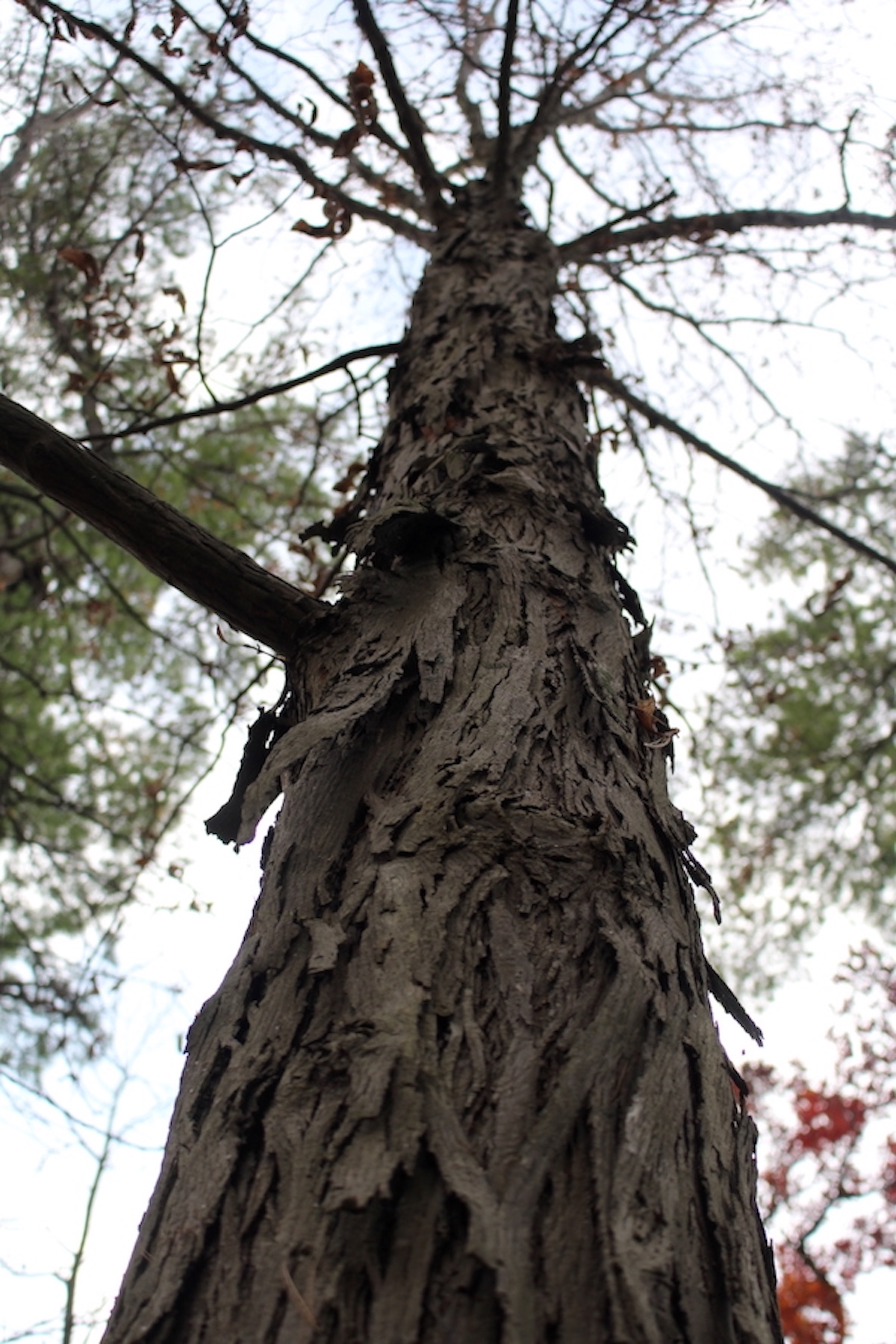
Shagbark Hickory Medicinal Benefits
Shagbark Hickory was once an essential source of food, material, and medicine for native peoples of the eastern United States and Canada. The inner bark was mainly used in medicine. It is very astringent and may have diaphoretic, digestive, and emetic activities.
Externally, they would use the inner bark as a dressing for cuts and ruptured blood vessels and soothing arthritis. Internally, they would chew the bark for mouth sores or steep it as a tea for treating colds, menstrual problems, rheumatism, kidney problems, and heart issues.
Some modern research has deepened our understanding of native people’s use of this and other tree species. A 2000 study explored the antimicrobial activity of extracts from eastern hardwood trees, including Shagbark Hickory, and their relation to traditional medicine. The study found that these extracts were most active against gram-positive bacteria and filamentous fungi. It also showed a correlation between antimicrobial activity and medicinal use by First Nations people.
While not specifically those of the Shagbark Hickory, hickory nuts of all species are healthy foods. They contain high amounts of omega-3 fatty acids (more than cashews or peanuts). They also contain antioxidants like vitamin E and phytochemicals like plant sterols and flavonoids, which are beneficial to cardiovascular health.
In traditional Chinese medicine, hickory nuts are used for brain health. This use was also supported by modern research. A 2020 study found that the compounds in hickory nut extract “had activity to promote the neurite outgrowth in human SH-SY5Y cells.”
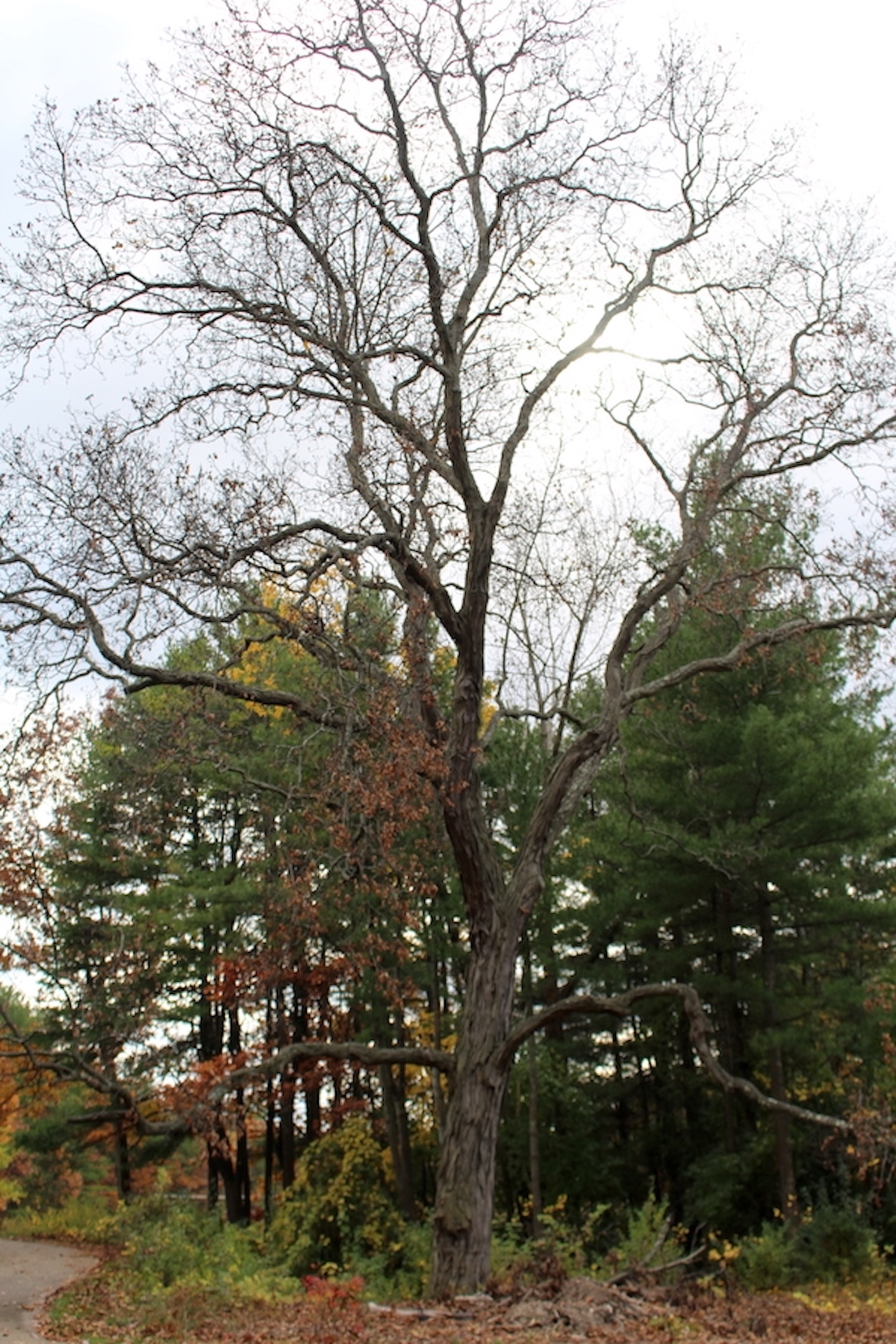
Where to Find Shagbark Hickory
Shagbark Hickory is native to the eastern United States and Canada. This tree grows in southern Quebec and Ontario over to southeastern Nebraska and Minnesota, and south to east Texas, Louisiana, Alabama, Mississippi, and Georgia.
There are also scattered populations of Shagbark Hickory in the mountains of Northeastern Mexico. Shagbark Hickory was also introduced to Europe in the 17th century, and some Shagbark trees still grow in central Europe.
There’s a range map below, but you can find a more detailed Shagbark hickory range map from the USDA.
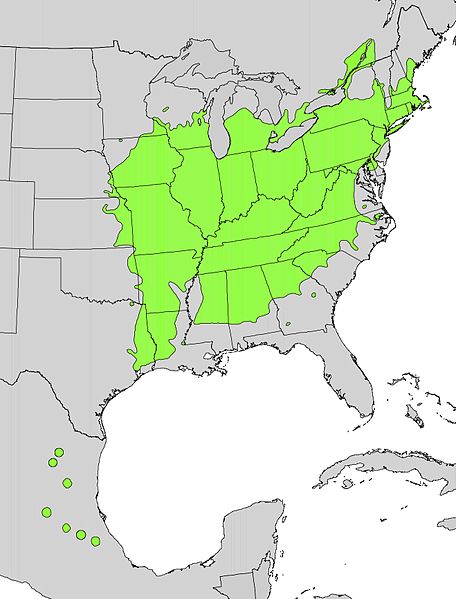
Shagbark Hickory thrives in humid areas with moist, well-drained soil. It will tolerate various soil types, including acidic, neutral, and alkaline soil, as well as clay, sand, loam, and silt. Once established, it will tolerate various conditions, including occasional drought and flooding. It grows best in full sun to partial shade.
Shagbark Hickory usually grows in mixed hardwood forests in valleys or upland slopes. Shagbark Hickory often grows on south-facing slopes in the far northern reaches of its range. In the far southern parts of its range, it’s common to find Shagbark Hickory in fertile bottomlands and rich, north-facing slopes.
When to Find Shagbark Hickory
Shagbark Hickory is an easy tree to identify year-round. Their unusual shaggy bark sets them apart and makes them easy to pick out, even for the amateur naturalist.
Once you’ve identified some, you’ll know where to look when the nuts begin to mature. In most areas, this happens in September or October, with nuts in more southern regions ripening first.
Usually, Shagbark Hickories are towering trees before they begin fruiting. Thankfully, there’s no need to harvest the nuts directly from the tree. Visit your Shagbark Hickories after windy days and storms in the fall, and simply pick the nuts up off the ground.
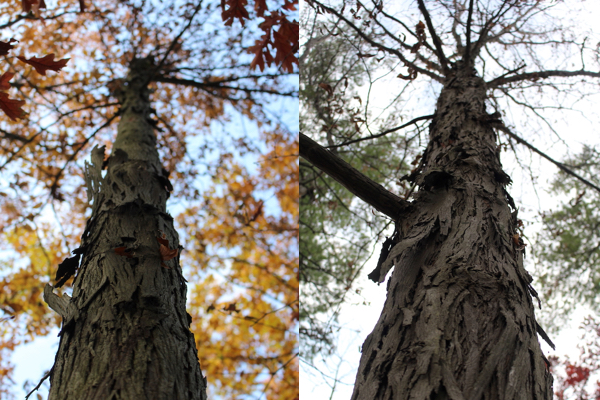
Identifying Shagbark Hickory
Shagbark Hickories grow tall and straight, often reaching heights between 40 and 100 feet tall. They usually have narrowly oval or irregularly shaped crowns.
They’re easy to spot for their namesake gray bark, which peels off in large curving plates, giving the tree a shaggy appearance. You may also spot their pinnately compound leaves, which usually have five leaflets. The leaves are typically green but turn golden yellow in autumn.
Shagbark Hickories are also easy to find when the nuts drop in the autumn and are scattered on the forest floor. They have a green four-part husk; you’ll notice the four ribs if you pick one up, which splits when the nut is ripe.
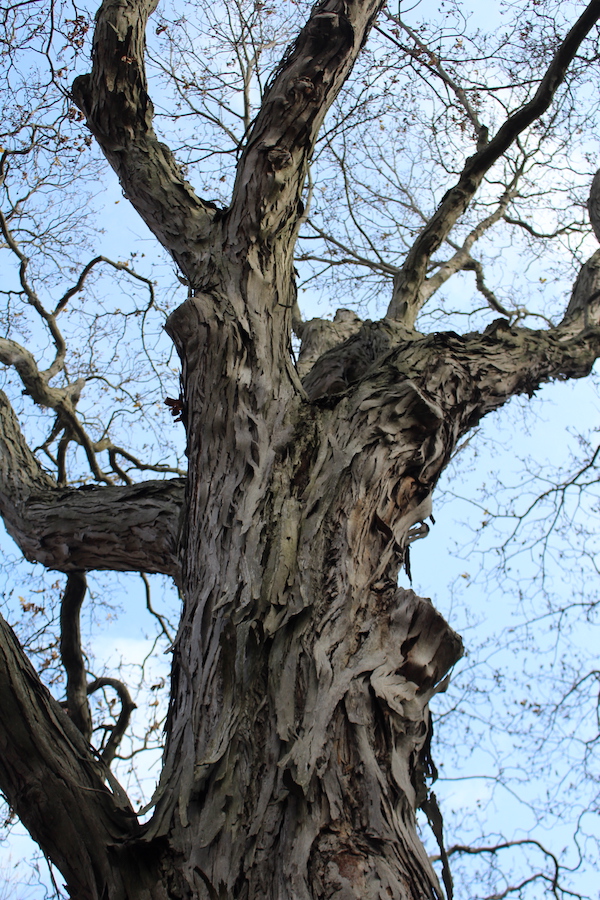
Shagbark Hickory Leaves
Shagbark Hickories have large alternate, pinnately compound leaves 8 to 14 inches long. Typically, each leaf has five wide leaflets, but they may occasionally have 7 or 9. The leaflets generally are 3 to 7 inches long and stalkless.
They have hairy, finely sawtoothed edges, and the terminal leaflet is always the largest. The leaves are yellow-green above and paler below. Young leaves may have hairy undersides. In autumn, the leaves change to golden or golden brown.
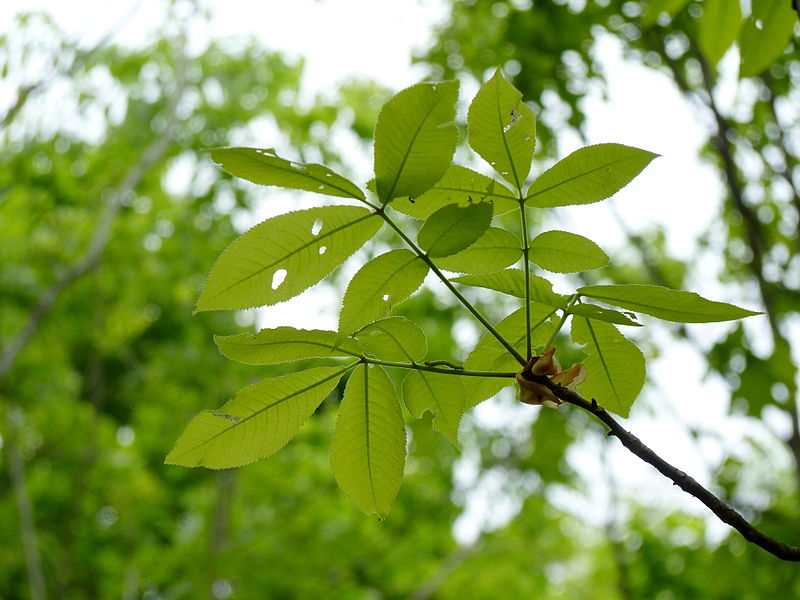
Shagbark Hickory Bark
Shagbark Hickories usually have relatively straight trunks reaching 40 to 100 feet tall, though 150-foot-tall individuals have been recorded. They often reach 2.5 feet in diameter.
The trunks feature the light gray bark that gives this tree its name. The bark separates into long, narrow, curved stripes that are loosely attached at the middle and peel away from the tree on the ends.
Young Shagbark Hickory twigs are usually brown and stout. They end in large, brown, hairy buds.
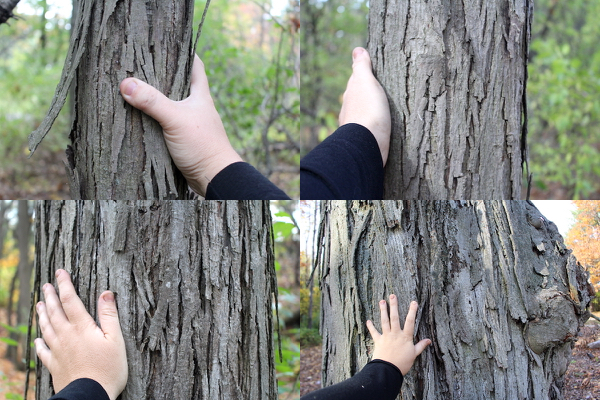
Shagbark Hickory Flowers
Shagbark Hickories flower in early spring before the leaves are present. Each tree has male and female flowers.
The male flowers are clustered in drooping catkins 1½ to 5 inches long. The catkins form in groups of three at the base of the current year’s twigs. The flowers are yellowish-green and have up to 10 stamens.
The female flowers are also tiny and are clustered in groups of two to four at the tip of the current year’s twigs. Each flower has a yellowish-green oval or egg-shaped ovary covered in tiny hairs and scales. Each ovary has a green stigma at the top.
Shagbark Hickory Nuts
Shagbark Hickory nuts comprise an outer husk, shell, and nut. When intact, these fruits are usually 1.25 to 2.5 inches long and are nearly round with a flattened tip.
The outer husk begins green but becomes dark brown or blackish over time. As it darkens, it splits into four pieces from tip to base. The inner shell is light brown, elliptical or rounded, and slightly flattened and angled. Inside that inner shell is a sweet kernel, not unlike a walnut or pecan.
Husks and shells take a long time to decompose and can help locate Shagbark Hickory trees as they often remain on the forest floor for several years.
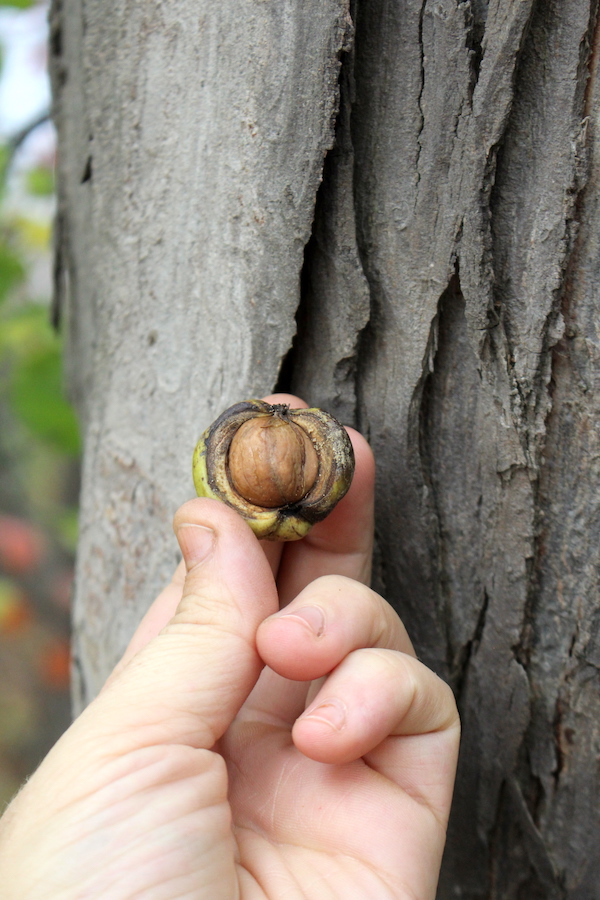
Shagbark Hickory Look-Alikes
Shagbark Hickory is often confused with the closely related and equally edible Shellbark Hickory (Carya laciniosa) or “Big Shagbark Hickory.” However, there are a few features that set them apart:
- Shellbark Hickory has large pinnately compound leaves 12 to 20 inches long.
- Each Shellbark Hickory leaf typically has seven broadly lance-shaped leaflets, which are shiny dark green above and paler and covered with soft hairs beneath.
- The twigs are usually stout and pale orange.
Another closely related and edible lookalike is the Pignut Hickory (Carya glabra) or “Smoothbark Hickory.” The Pignut Hickory is distinguished from the Shagbark Hickory in the following ways:
- The Pignut Hickory has pinnately compound leaves that are 6 to 10 inches long and comprise five leaflets.
- Each Pignut Hickory leaflet may or may not have hair on the veins beneath, is 3 to 6 inches long, lance-shaped, and largest towards the tip.
- The Pignut Hickory has light gray bark that’s smooth when young but may become furrowed with forking ridges in older trees.
- The twigs are slender, brown, and hairless.
- The fruits are 1 to 2 inches long, pear-shaped or rounded, with thin husks and non-angled inner shells.
Lastly, Shagbark Hickory can be confused with Buckeye or Horse Chesnut species (Hippocastanaceae spp.), which have toxic nuts. Fortunately, they can easily be distinguished in the following ways:
- Buckeyes have palmately compound leaves, usually with 5 to 9 (occasionally 3) leaflets.
- Buckeyes have showy flowers in large, upright, branched clusters.
- Individual Buckeye flowers are slightly bell-shaped and may have white, pink, red, or yellow petals.
- Buckeye fruits have a large, rounded, brown outer husk that sometimes has spikes and splits into three parts.
- Inside the husks, Buckeyes have 1 to 3 large, poisonous, shiny brown seeds with light-colored scars at the base.
Ways to Use Shagbark Hickory
Shagbark Hickory nuts were once a staple for native peoples of the eastern United States and Canada, like the Cherokee, who made Kanuchi a hickory nut soup. Sadly, they are often overlooked today in favor of better-known options like walnuts and pecans. However, Shagbark Hickory nuts have a deliciously sweet flavor, and a single tree can offer a bounty on a good year.
After husking and shelling the nuts, use them as you would other nuts. Shelling can be tedious, but once prepared, you can eat them plain or easily toss them into salads, granola, oatmeal, or trail mix. Adding hickory nuts to your diet may help improve brain and cardiovascular health!
For those with a sweet tooth, Shagbark Hickory Nuts make a delicious addition to fudge, candy, and baked goods. Try replacing the pecans in your favorite pecan pie recipe! You can also use them for savory creations like pesto, nut butter, nut milk, and toasted toppings for fish or salad.
You may also experiment with using the inner bark medicinally. However, little modern research on Shagbark hickory bark is available, so use your best judgment. Though it involves quite a bit of effort, you can also experiment with making salt from the roots.
The wood from Shagbark Hickory is also quite useful. It’s tough and flexible for tool handles and other equipment. As charcoal, it adds excellent flavor to meat and other smoked or grilled dishes.
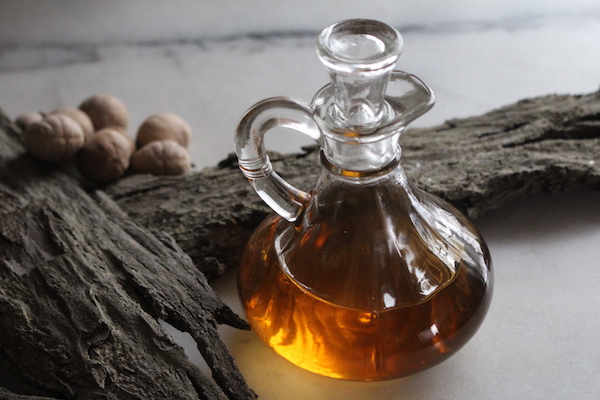
Shagbark Hickory Recipes
- Shagbark Hickory has excellent flavor for sweet treats. Try our Shagbark Hickory Syrup.
- Impress your friends at a holiday cookie swap with these Wild Hickory Nut Shortbread Cookies from Serious Eats.
- Create your own delicious, traditional hickory nut milk (Kanuchi) with these simple instructions from The Forager Chef.
- Try a cake recipe that has been passed down for three generations with this Grandma’s Hickory Nut Cake recipe from Taste of Home.
- Make a great foraged meal with this Wisconsin Ramp Pesto that uses delicious ingredients like parmesan cheese, olive oil, ramps, and hickory nuts.
Wild Edible Nuts
Looking for more wild edible nut foraging guides?
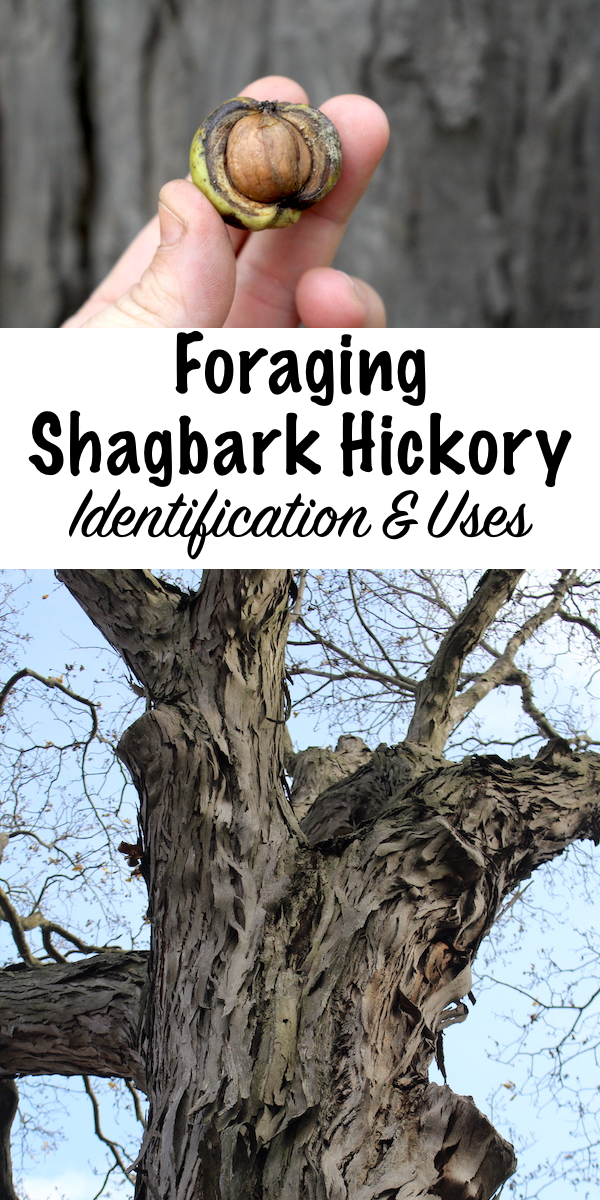
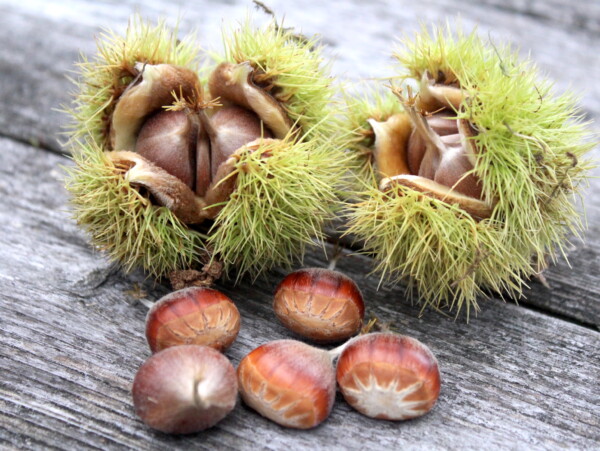
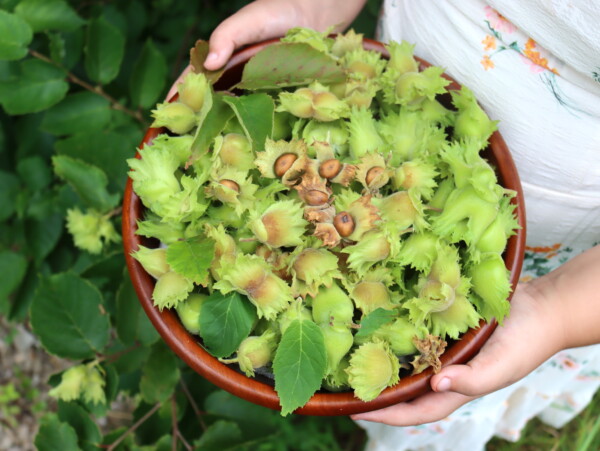
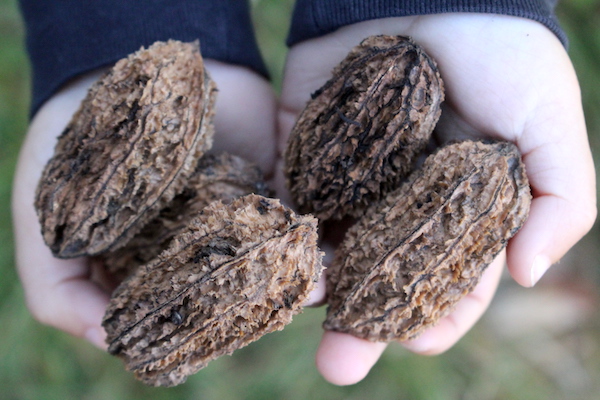
Hi, I live in Nth. East Victoria, Australia & am a very proud owner of 2 Shag Bark Hickory trees, still fairly young, possibly 25 + years old. Have been producing nuts for quite a few years. Several seedlings coming up under the trees. Beautiful trees. I am also lucky enough to have some Juggling Nigra, The Butternut. Just thought I would share. Regards.
Wonderful!
I thought the nuts of the shagbark were much bigger?? Those look more like pignut? I am not an expert though! Regardless, I want to try this syrup and an attached greenhouse and so much more! Thanks for this amazing website.
It’s certainly possible that different trees might produce different size nuts depending on the growing conditions.